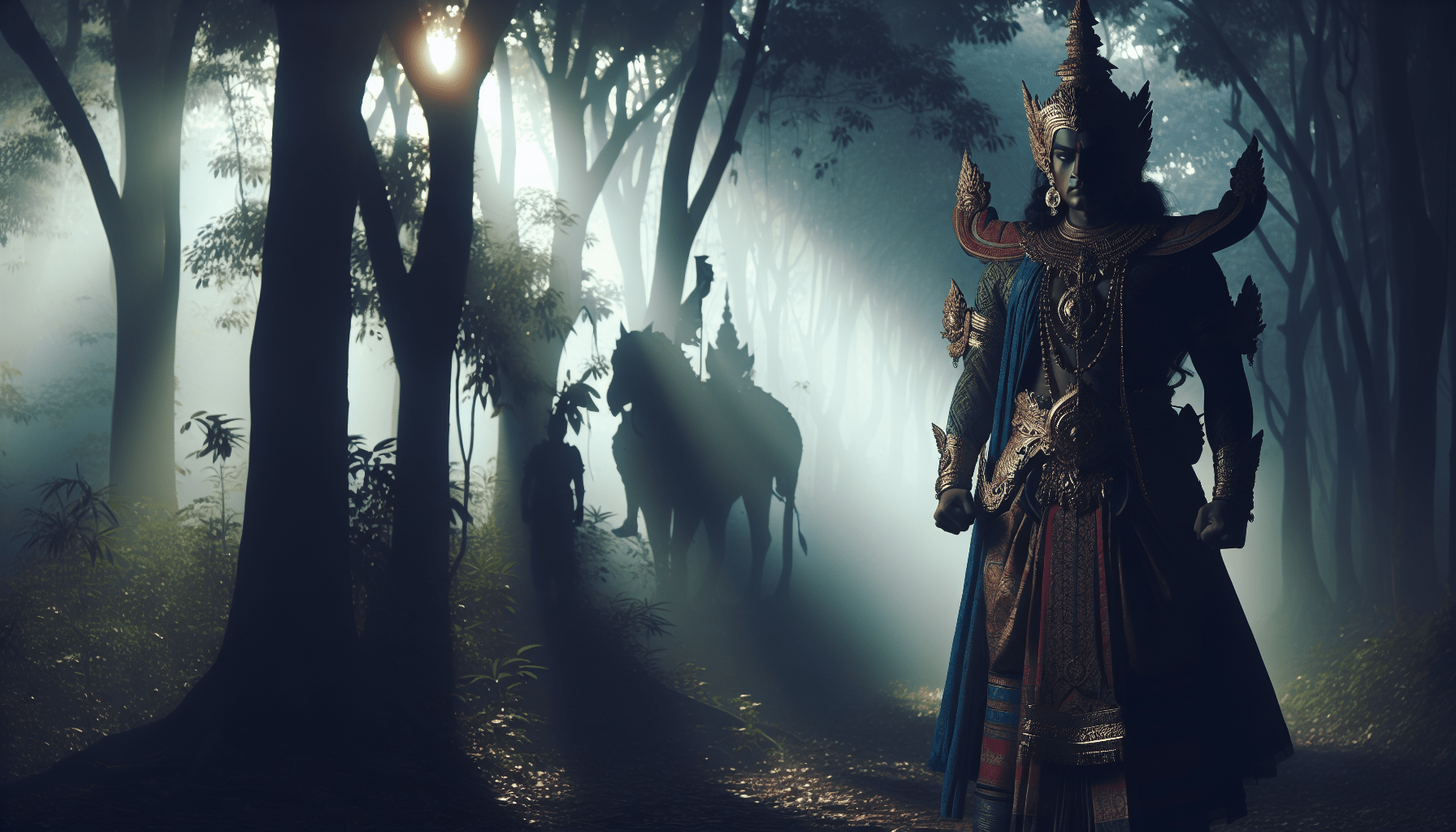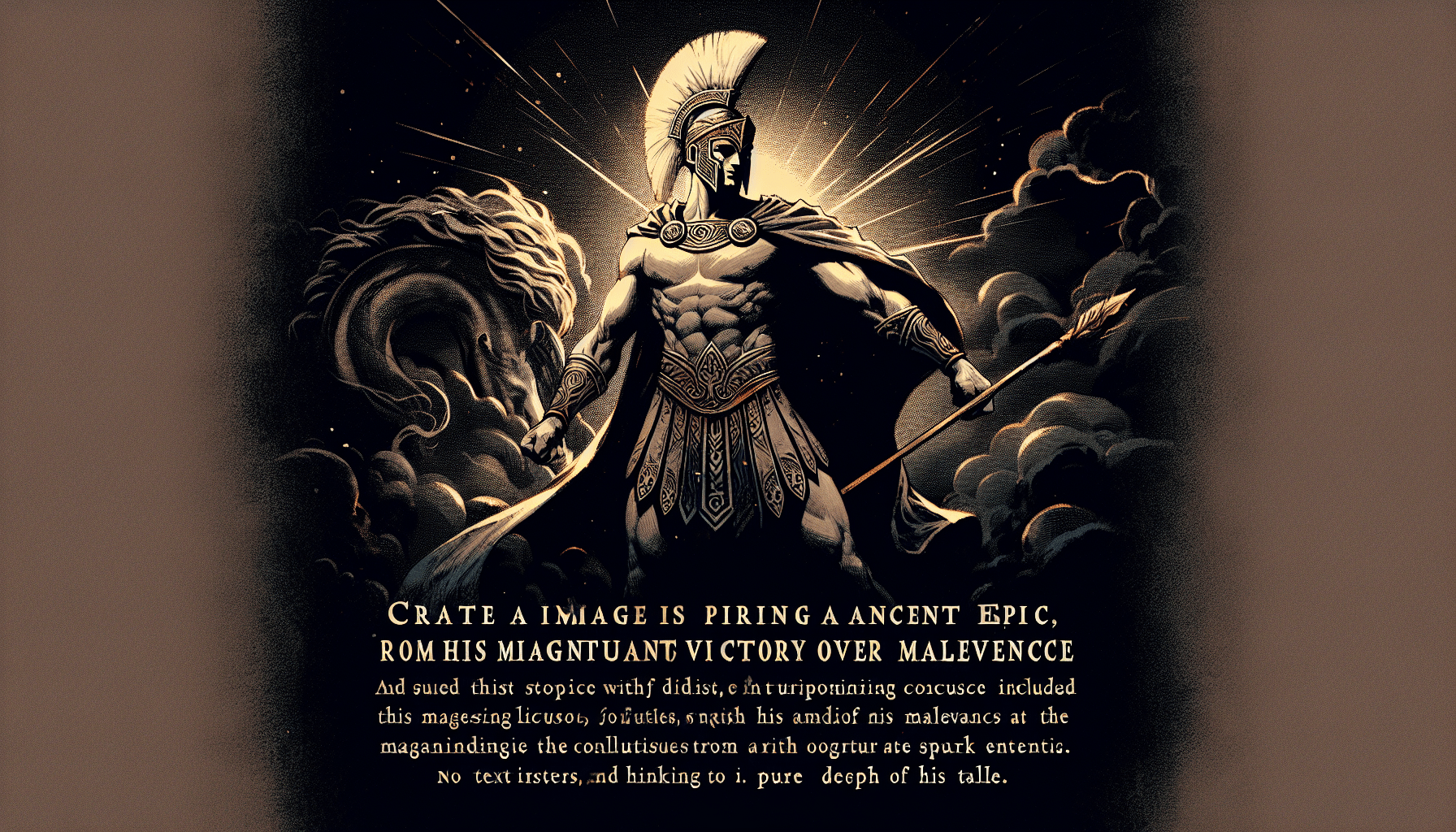Have you ever wondered what happened to Lord Rama, the heroic protagonist of the epic Ramayana, as his extraordinary journey came to an end? The tale of Lord Rama is rich with mythical adventures, larger-than-life characters, and profound teachings. While his reign as the ideal king is widely celebrated, his ultimate fate after the war against the demon king Ravana remains a topic of intrigue and fascination. Join us on a captivating exploration as we uncover the final chapter of Lord Rama’s extraordinary life and discover the profound legacy he left behind.

Table of Contents
Return to Ayodhya
After the victorious battle against the mighty demon king Ravana, Lord Rama and his loyal army finally triumphed. The city of Ayodhya rejoiced as their beloved prince, along with his beloved wife Sita and loyal brother Lakshmana, returned as victors. The entire kingdom was in a state of jubilation, celebrating their triumph over evil. The return to Ayodhya marked the end of an arduous and challenging journey, filled with countless tests and trials.
Victory over Ravana
The defeat of Ravana, the ten-headed demon king, was not a simple feat. Lord Rama had to face numerous hardships and overcome insurmountable obstacles in order to rescue his beloved wife, Sita, who had been abducted by the wicked Ravana. With unwavering determination and divine assistance, Lord Rama led an army of loyal warriors and defeated Ravana in a fierce battle. This victory not only symbolized the triumph of good over evil but also showcased Lord Rama’s unwavering devotion, courage, and righteousness.
Sita’s test of purity
However, Rama’s return to Ayodhya was not without its challenges. Doubts and rumors regarding Sita’s purity began to spread like wildfire throughout the kingdom. To address these doubts, Sita had to undergo Agni Pariksha, a test of her purity, by walking through a blazing fire. With deep faith and innocence in her heart, Sita emerged unscathed from the fire, proving her unwavering devotion and purity. This profound event not only cleared Sita’s name but also reaffirmed Lord Rama’s trust and love for her.
Triumphal return
Following the successful trial and purification of Sita, the triumphant return to Ayodhya was marked by grand celebrations and festivities. The streets of Ayodhya were filled with joyous crowds eager to catch a glimpse of their beloved prince and his divine consort. The entire kingdom was adorned with vibrant decorations, and the air was filled with the sound of music and cheers. The return to Ayodhya marked not just the end of the exile, but also the beginning of a new era, one that would be characterized by justice, righteousness, and prosperity under Lord Rama’s rule.
Rama’s Rule and Governance
Establishment of Ram Rajya
With the return to Ayodhya, Lord Rama embarked on a new journey as the king, establishing the golden age of Ram Rajya. Ram Rajya was not just an ordinary kingdom; it was a utopian land governed by principles of justice, righteousness, and equality. Lord Rama ensured that every citizen of Ayodhya was treated with fairness and utmost respect, regardless of their caste or social standing. He believed in the spirit of inclusivity and aimed to create a society that thrived on harmony and communal welfare.
Ideal king and leader
Lord Rama’s reign over Ayodhya was marked by his exemplary qualities as an ideal king and leader. He demonstrated selflessness, empathy, and humility in all his actions. Lord Rama always placed the welfare of his subjects before his own desires and guided his kingdom with wisdom and compassion. He would often leave the comforts of the palace to connect with his people, listening to their grievances and addressing their concerns. His ability to lead by example and inspire others made him not just a revered king but also a beloved leader.
Just and righteous rule
Under Lord Rama’s rule, Ayodhya experienced an era of prosperity and harmony. The kingdom thrived as Rama ensured that justice prevailed, irrespective of an individual’s social standing or power. He established a fair judicial system that ensured everyone received a fair trial and punishment, regardless of their background. Lord Rama’s belief in righteousness and fairness helped foster a society where truth and integrity were upheld, and corruption was not tolerated.
Birth of Luv and Kush
Ashwamedha Yagna
During Lord Rama’s reign, a significant event transpired that would shape the future of Ayodhya – the Ashwamedha Yagna. This grand ritual involved the release of a noble horse into the kingdom, symbolizing Lord Rama’s absolute authority and dominance. The horse’s journey was carefully monitored, and any king or warrior who dared to challenge Lord Rama’s supremacy would have to engage in a fierce battle. This event not only showcased Lord Rama’s power but also served as a test for worthy opponents.
Sita’s exile
Amidst the Ashwamedha Yagna, Sita chose to leave the kingdom of Ayodhya. It was not an easy decision for her, but the rumors and doubts cast upon her purity took a toll on her spirit. Sita, in her selflessness and love for Lord Rama, decided it would be best to distance herself from Ayodhya, relieving Lord Rama of any further turmoil caused by society’s opinions. Sita’s exile was a tragic event that left Ayodhya in a state of mourning, as they bid farewell to their noble queen.
Sons of Lord Rama
During her time in exile, Sita gave birth to twin boys – Luv and Kush. The brothers, though raised in the wilderness, possessed extraordinary skills and were known for their valor and love for their mother. They became proficient in the arts of archery and warfare, unaware of their true lineage. As fate would have it, Luv and Kush would eventually cross paths with Lord Rama, setting the stage for a profound reunion that would shape the destiny of Ayodhya.
Sita’s Departure from Ayodhya
Doubts and rumors
Despite the pain caused by Sita’s exile, Ayodhya was not spared from doubts and rumors regarding her purity. The citizens, though enamored by Lord Rama’s rule, struggled to accept Sita’s departure as they pondered over the validity of the rumors. These whispers plagued Ayodhya, clouding the minds of the people and causing unrest within the kingdom.
Sita’s self-immolation
Unable to bear the whispers and doubts any longer, Sita decided to take matters into her own hands. In a profound act of sacrifice, she chose to prove her purity and devotion one last time. Sita walked into the raging flames, offering herself to the fire. This heartbreaking event shook Ayodhya to its core, leaving the kingdom in a state of inconsolable grief and remorse.
Mother Earth’s intervention
However, Mother Earth could not bear the injustice done to Sita. As the flames engulfed her, the Earth trembled and split open, revealing Sita unharmed. The divine intervention reaffirmed Sita’s unparalleled purity and exonerated her once and for all. This event, though tragic, brought a glimmer of hope to Ayodhya, as they realized the depth of Sita’s sacrifice and the injustice that had been done.

Rama’s Final Journey
The call of the river Sarayu
After the tumultuous events surrounding Sita’s departure, Lord Rama felt a powerful calling from the river Sarayu. Recognizing that his time on earth was coming to an end, Lord Rama understood that it was time for him to embrace his destiny and ascend to his divine abode.
Preparation for departure
With heavy hearts, the people of Ayodhya began to make preparations for Lord Rama’s departure. The entire kingdom mourned, yet they celebrated his legacy and the profound impact he had on their lives. Lord Rama, ever the compassionate leader, assured his people that he would always watch over them and guide them from his divine abode.
Rama’s ascension to Vaikuntha
As the time came for Lord Rama’s final journey, the people of Ayodhya gathered by the river Sarayu, bidding farewell to their beloved king. With tears and prayers, they watched as Lord Rama, along with his brothers and loyal companions, embarked on a magnificent celestial chariot that descended from the heavens. The chariot carried Lord Rama to Vaikuntha, his eternal abode, symbolizing the completion of his earthly journey and the union with the divine.
In conclusion, the end of Lord Rama’s journey was marked by the triumphant return to Ayodhya, the establishment of an ideal rule, the birth of Luv and Kush, Sita’s departure and subsequent divinely guided exoneration, and finally, Lord Rama’s ascension to Vaikuntha. The story of Lord Rama’s life teaches us valuable lessons in righteousness, devotion, and the triumph of good over evil. His legacy lives on, reminding us of the power of love and the importance of leading a just and virtuous life.